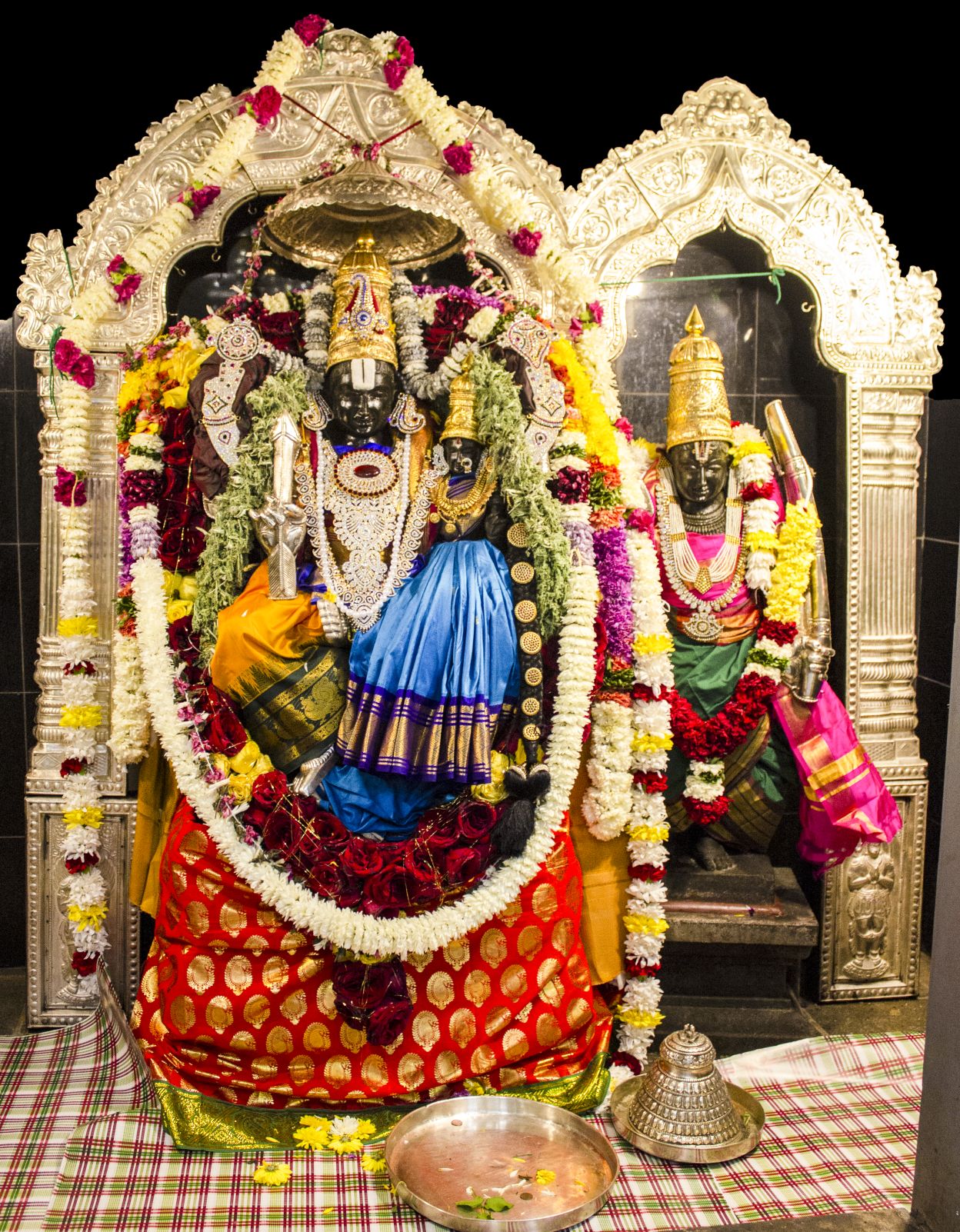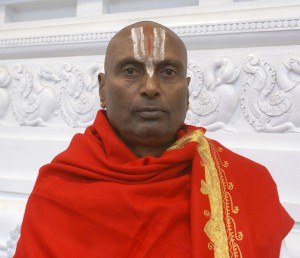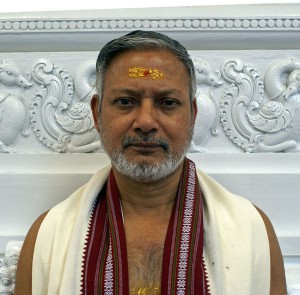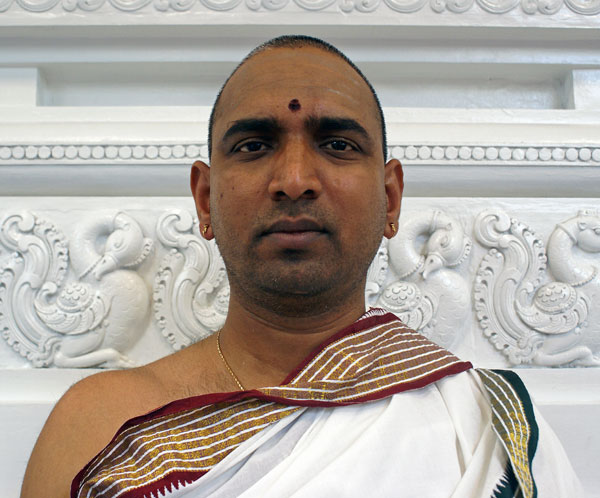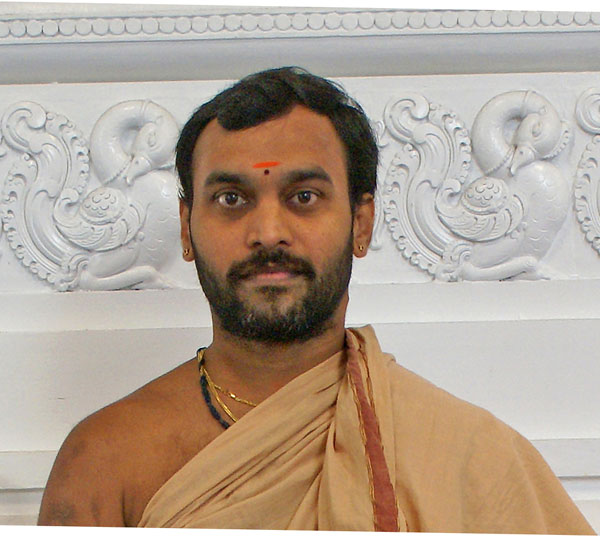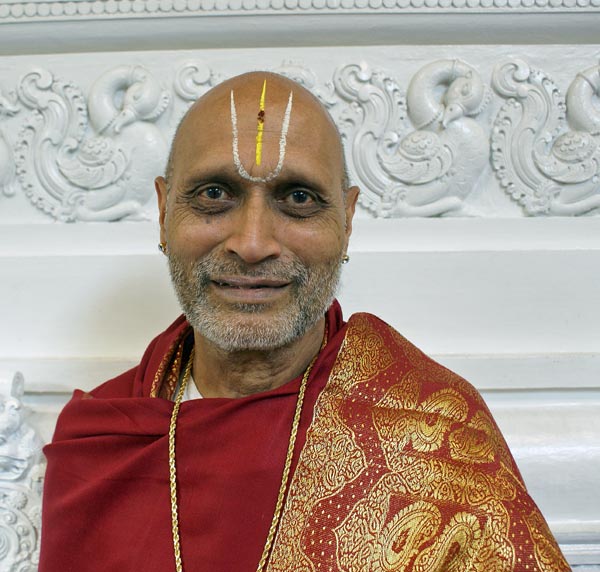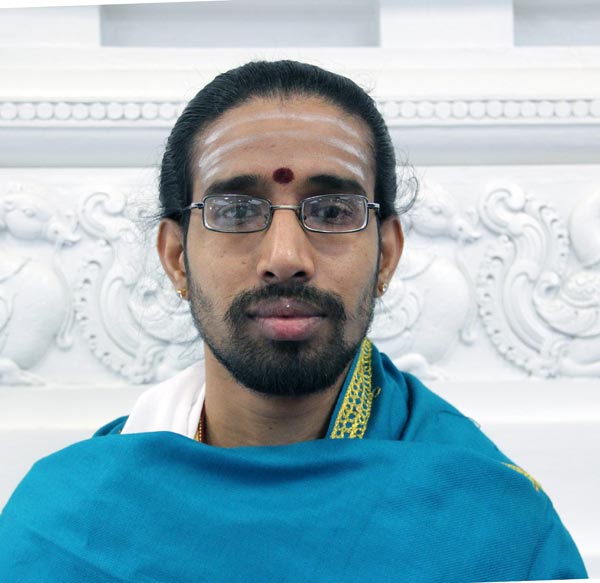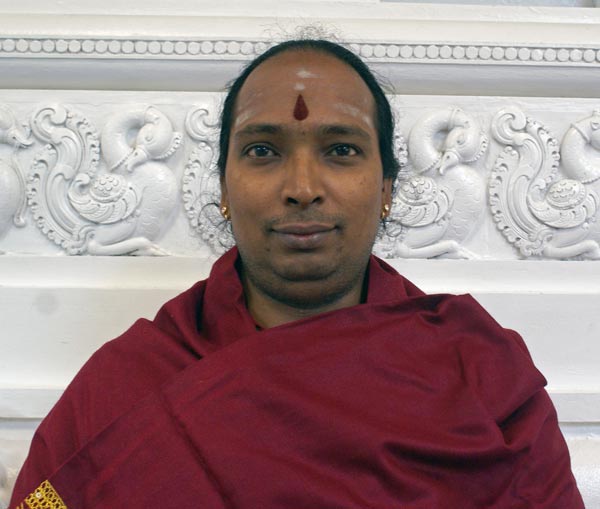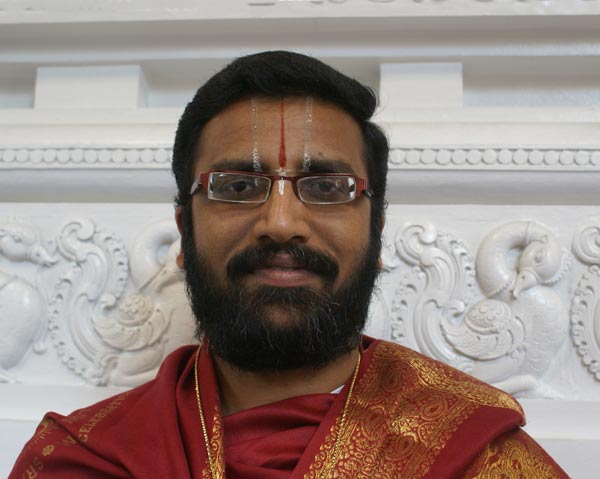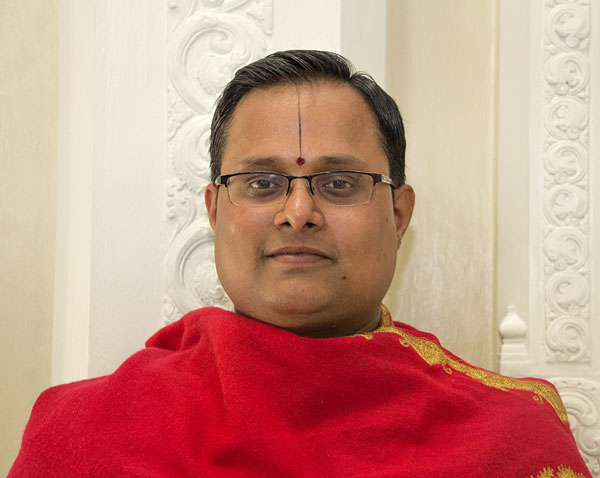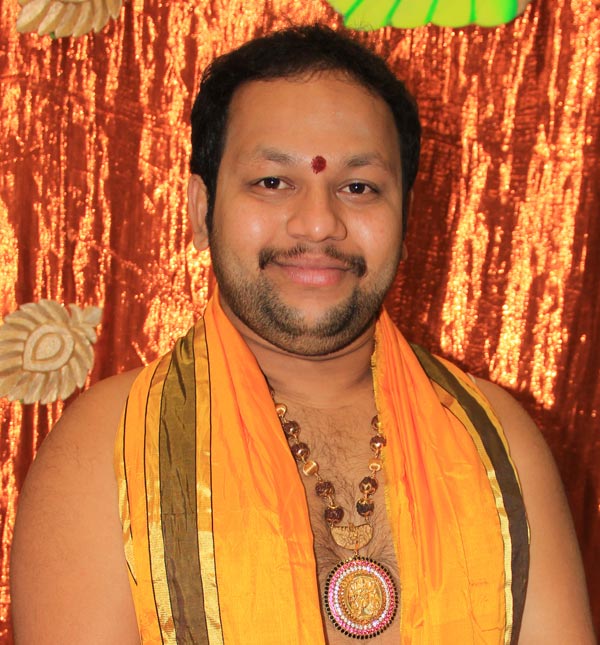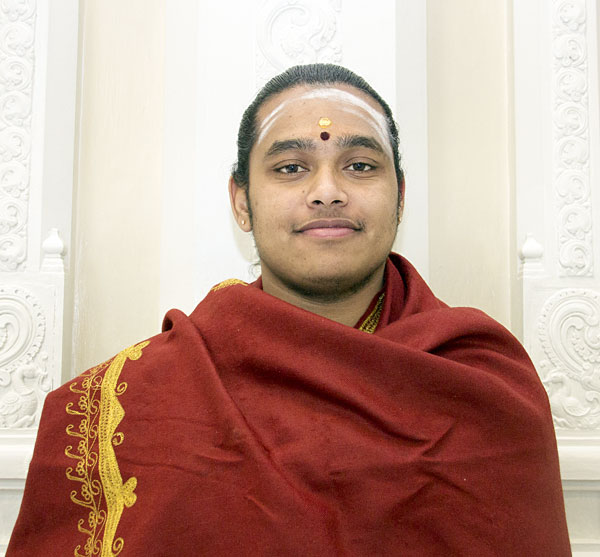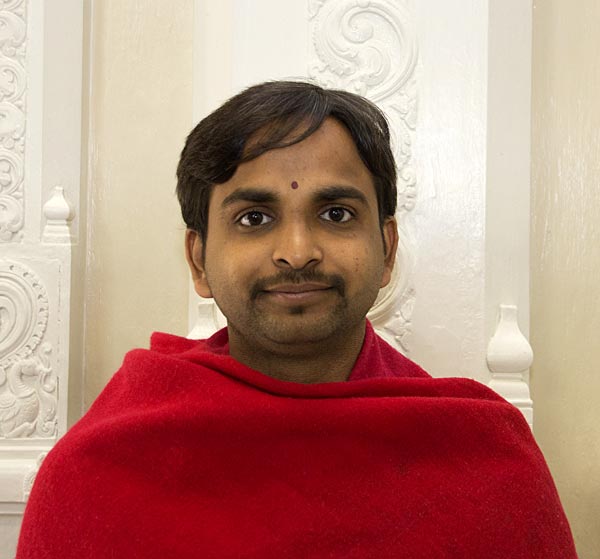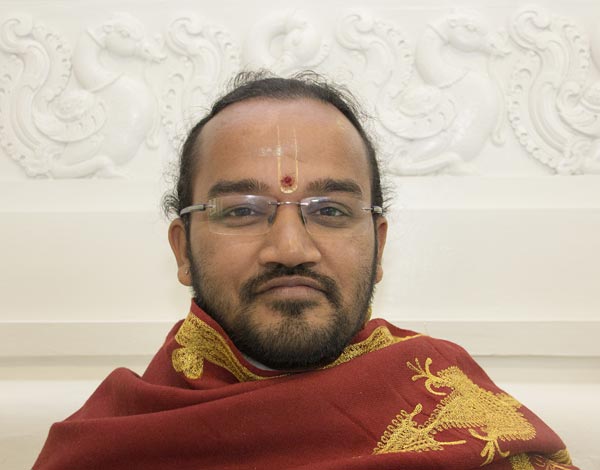Sri Rama
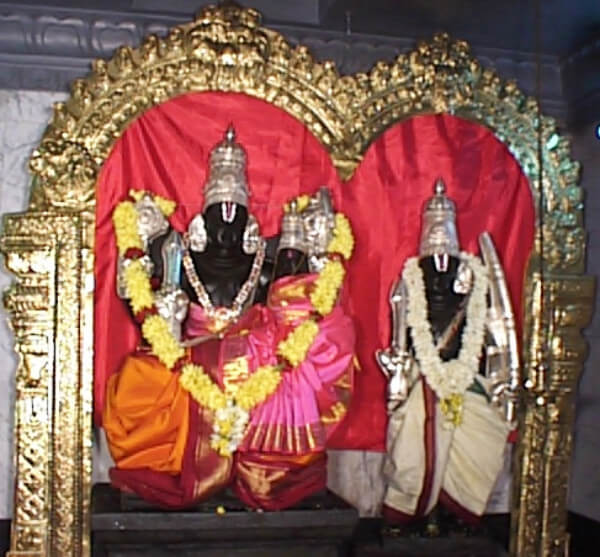
Sri Rama
Rama is the eighth major incarnation of Vishnu. Vishnu assumed different forms on several occasions and came down to earth to protect the good people from the evil, to reestablish the right order and to punish the wicked. Rama is one of the most popular Avataar. He exemplifies the ideal of Manava Dharma (duties and moral code for humans).
Sri Rama Prayer book
Rama Astotharam
Special Pujas and Festivals
Rama Navami
Temple-
Bhadrachalam Temple
SLOKA/PRAYER
Raamaaya Raama Bhadhraaya Raamachandraaya Vedhase
Raghu Naathaya Naathaaya Seethaaya Pathaye Nama
MEANING
I bow to Raama, Raamabhadhra, Raamachandraa, the one who knows everything, the Lord of Ragu Vamsa and the husband of Sita.
RAMA AT SSVT
In Sri Siva Vishnu Temple, Rama holds His consort Sita on His lap. Lakshmana, His Brother, is seen vigilant with bow and arrow on his side. This represents the famous temple at Badrachalam. This is the only place where Rama, to grant the wish of a famous devotee, appears in Viswaroopa Darshanam, with four hands. The Sanctum Sanctorum of Rama is built in Rayar style architecture. Thus at SSVT Vishnu is seen in all the three forms: sitting (Rama), standing (Krishna and Venkateswara) and reclining (Ananthapadmanabha).
AUSPICIOUS DAYS AND FESTIVALS
Mondays and Saturdays are auspicious to Rama. Navami, the ninth day of lunar fortnight, is a special day of worship of Rama. Sri Rama Navami falling in March-April, is celebrated as the birthday festival of Rama. Sita kalyanam is celebrated during one of the days of Sri Rama Navami Festival and also during Navarathri. During the Rama Navami festival, devotees chant the entire Ramayana. The tenth day of Navarathri , is celebrated as Vijaya Dasami, the day Rama destroyed Ravana and his demon forces. Deepavali is celebrated as the day of Rama’s return to Ayodhaya and coronation as its king.
SPECIAL OFFERINGS
Apart from flowers and fruits, light drink prepared from jaggery and also butter milk are special offerings to Rama. Reciting the verses in Sundara Kaanda in Ramaayana is auspicious. Performing Sita Kalyanam is also customary.
GAYATHRI
Dhaasaradhaaya Vidhmahe, Seetha Vallabaaya Dheemahi
Thanno Raama Prachodhayaath
MEANING
We worship Rama, the son of Dasaratha. Salutations to Rama the husband of Sita. May that Rama stimulate our creative faculties.


